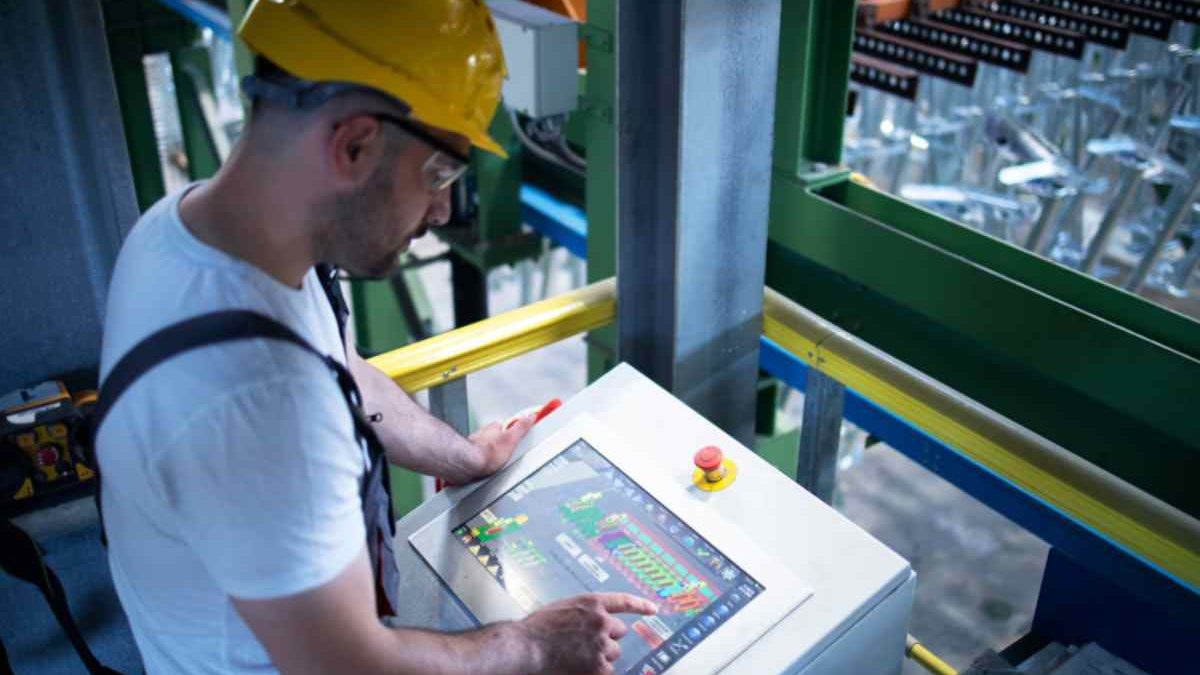Table of Contents
ToggleI. Introduction
In today’s manufacturing environment, some of the very important pressures are reduced downtime, great efficiency, and reliability. The sector is turning into Computerized Maintenance Management Systems (CMMS) to help with these goals. Manufacturing depends greatly on maintenance, and this program helps to guarantee that equipment runs effectively, production is on schedule, tool life is extended, and profits increase.
Use of CMMS is therefore not just a trend that should be embraced but a business necessity that must be adopted. According to the data collected, around 65% of the industries implemented improvement measures in maintenance by CMMS by 2017. The growth rate of CMMS has been estimated to be 9.8% for the year 2020, and projected market sales of the CMMS to be at 1.26 billion in the year 2026. This growth shows the vast potential of CMMS and the positive impact it is bound to have on the current business field.
This rise in adoptions signifies the role of CMMS as a critical solution within the center of manufacturing difficulties. These are to optimize production line productivity and ensure that equipment is in good working condition all the time. Again, CMMS helps minimize costly downtimes that stop operations, affecting the profits earned.
II. Major Features and Advantages of CMMS
To Maintenance Teams and Operations:
Effective maintenance scheduling and coordination: It is mainly aimed at improving the process of creating the maintenance schedules, assigning tasks to the right employees and the implementation of maintenance work. By so doing, CMMS saves time, reduces human error, and optimizes the use of resources in maintenance management for better and cheaper results.
Appropriate work request and order handling
It is easy for the maintenance managers to create a work order and to assign as well as track the work order through this software. The real-time visibility of the dispatched work orders helps the managers effectively organize the requests based on priorities such as their degree of urgency and allocate services and goods in an efficient way to complete the ordering processes within time.
Reliable and up-to-date asset information:
Asset information including its maintenance history or records, specifications and warranty information are all gathered in one central location thus enabling well informed decision making towards future maintenance management.
Cost reduction in maintenance:
In keeping optimal working schedules, minimizing operational downtimes and increasing equipment longevity, CMMS makes a significant contribution towards overall maintenance cost. A proper maintenance program that can be supported by CMMS can help reduce breakdowns and unnecessary downtime by a significant amount and at the same time help monitor the strength of the assets and maintain the constant production. Therefore, the total repair cost will be lower; and the labor charges and the cost of the part that would need to be replaced will also be lower.
Enhanced team communication and simpler vendor management:
CMMS ensures smooth communication among maintenance teams and makes it easier to manage external vendors, enabling effective collaboration and prompt support.
For the Organization:
Boost in Productivity and Uptime: With the help of CMMS, machines fail less often, and proper maintenance is easy to organize. This translates into enhanced results. In a shorter time more work gets done.
Downtime Has Decreased: CMMS lessens downtime and its costly results from both unscheduled maintenance and scheduled maintenance operation.
Extra Security and Legal Compliance: CMMS keeps well informed of safety rules and enforces compliance of regulations. This decreases risk and liability.
Higher Staff Morale and Efficiency: With the disappearance of unnecessary duties, stress from sudden emergencies and the general need to hurry down or even off altogether
Specific Features and Functionalities:
Preventive Maintenance Scheduling: Knowing when your next scheduled inspection or lubrication is scheduled enables you to prevent sudden failures and keep equipment running smoothly. It’s also a chance to fix small problems before they get too expensive in harmony with the machine itself.
Real-Time Equipment Monitoring: Modern CMMS systems provide live updates on equipment performance, allowing quick discovery and repair of problems
Computerized Maintenance and Data Management: Using computers for planning and data collection can make work easier, reducing human errors. It ensures maintenance work is done as needed because planned plant equipment use indicates that certain parts are responsible for even its continuing trouble.
Efficient Inventory Management of Spare Parts: Spare parts need to be properly managed so that we do not run short and halt production while at the same time avoid having more in stock than necessary tying up money for long periods. The CMMS help keep track of usage and predict future needs by using trends in computer data.
Quick Asset Identification via QR Codes: When a QR code is scanned, it speeds up maintenance and guarantees better data accuracy. This makes their life easier for technicians, who are laboring away at their own affairs all day long only to find that they have made some mistake in how something has been done.
Maintenance by IoT Data Makes CMMS More Accurate: The CMMS system uses data from the Internet of Things (IoT) to carry out its work so as ensure precision in every aspect. Accordingly, it can suggest preventative measures and scheduling corrective action before anything deteriorates out of control.
III. The Transformation of Maintenance Professionals’ Duties
When CMMS or Computerized Maintenance Management Systems came out, almost no factory ever expected to employ those old methods again. Once upon a time, maintenance personnel were accustomed to waiting until things broke down before acting. Now that CMMS has become all the rage, preventive maintenance has become just another routine job. This change means that they have more of their time spent on analyzing data: new maintenance methods, new measures to make their work more efficient. Maintenance workers now need to learn how to use CMMS software, interpret data, and make informed decisions using real-time updates.
How CMMS Benefits Various Maintenance Roles
Facility Managers: CMMS helps you to organize different work orders and perform them on different aspects of facility management. At the same time, it ensures the safety of your staff. It also tells if your buildings are following regulations and assists in keeping track of assets as well as organizing work orders. All this information is stored in one place.
Maintenance Managers and Supervisors: CMMS enables your management not only to perform work orders but to track real-time performance as well, and it is of great benefit in making out an effective schedule for regular maintenance. By making this kind of third-party constraints transparent and clear, managers can raise their team’s work efficiency. It means that they will use resources more effectively.
Maintenance planners: With CMMS, maintenance planners now have the tools to plan and use anticipatory maintenance. This means if they see an issue coming up on the way in which we do things now, it may be handled before it ever becomes a problem–plus any potential downtime here should therefore be greatly reduced as well.
Maintenance technicians: With CMMS, technicians can access work orders and asset information while on the road, keep track of their skills and be part of a feedback loop. This serves to promote greater cooperation among team members. Better efficiency and more open communication within.
Machine Operators: Operators can immediately report problems and improve their communication with maintenance personnel using CMMS, therefore helping to expedite possible problem resolution.
Reliability Engineers: CMMS gives reliability engineers sophisticated data analysis skills that increase equipment reliability.
Conclusion
In short, manufacturing today depends on a CMMS. It is a wise investment for remaining profitable and competitive since it handles maintenance chores, lowers machine downtime, and enhances asset performance. Adoption of CMMS by manufacturers moves them to a more data-driven proactive maintenance approach that helps to produce longer-lasting equipment and improved efficiency. Additionally, enhancing safety, it increases production and saves costs. Investigating CMMS systems is a smart approach to help maintain steady business growth and ensure maintenance running smoothly.
Also Read: Boost Your Cloud Security Posture with ASPM, SIEM, and SOC 1 and SOC 2 Audits
Shashi Teja
Related posts
Hot Topics
Why Faxing From Your Phone Is a Game-Changer for Remote Work
Faxing might sound old-school, but it’s still a major part of business communication for many industries. As per Statista’s 2024…
9 Ways Agentic AI Will Transform Your Enterprises
The conversation around artificial intelligence (AI) has shifted from whether businesses should use it to how they can maximize its…



